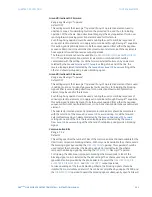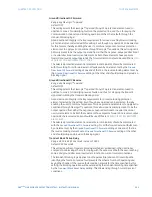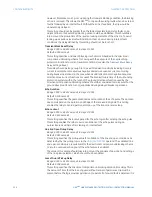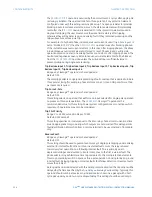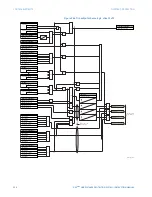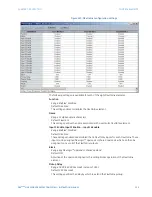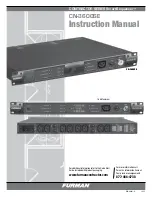
316
D90
PLUS
LINE DISTANCE PROTECTION SYSTEM – INSTRUCTION MANUAL
CONTROL ELEMENTS
CHAPTER 7: PROTECTION
Unlike the distance protection elements, the ground directional overcurrent functions do
not have a well-defined reach. As such, he current reversal logic is incorporated for the
extra signal supplementing zone 2 in the scheme. The transient blocking approach for this
POTT scheme is to recognize that a permissive signal has been received and then allow the
time specified by the
Transient Block Pickup Delay
setting for the local forward looking
directional element to pick up.
The POTT scheme generates an output operand (
POTT TX
) that is used to transmit the signal
to the remote end. Choices of communications channel include remote inputs and outputs
and telecommunications interfaces. When used with telecommunications facilities the
output operand should be assigned to operate an output contact connected to key the
transmitter at the interface. Power line carrier (PLC) channels are not recommended for
this scheme since the PLC signal can be interrupted by a fault.
For proper operation of the POTT scheme, the zone 2 phase and ground distance elements
must be enabled, configured, and programmed as per the standard rules of distance
relaying. The line pickup element should be also enabled, configured and programmed
properly to detect line-end open and weak-infeed conditions.
If used by POTT scheme, the selected ground directional overcurrent functions must be
enabled, configured, and specified accordingly. The output operand from the scheme (
POTT
OP
) must be configured to interface with other D90
Plus
functions (output contacts in
particular) to make the scheme fully operational. The output operand should typically be
programmed to initiate a trip, breaker failure, and autoreclose, as well as drive a user-
programmable LED as per user requirements.
Hybrid permissive overreaching transfer trip (hybrid POTT) application guidelines
The hybrid permissive overreaching transfer trip (hybrid POTT) scheme typically uses an
overreaching zone 2 distance element to essentially compare the direction to a fault at
both ends of the line. Ground directional overcurrent functions available in the D90
Plus
can
be used in conjunction with the zone 2 distance element to key the scheme and initiate its
operation. This increases the coverage for high-resistance faults.
The hybrid POTT scheme is intended for three-terminal applications and for weak-infeed
conditions. As a long reach of the overreaching distance element may be required for
three-terminal applications, transient blocking logic is provided for both distance and
ground directional overcurrent elements. An echo feature is made available to cope with
weak-infeed conditions.
By default the scheme uses the reverse-looking zone 4 distance element to identify reverse
faults. Additionally, reverse-looking ground directional overcurrent functions can be used
in conjunction with zone 4.
For proper operation of the scheme the zone 2 and zone 4 phase and ground distance
elements must be enabled, configured, and specified as per the standard rules of distance
relaying. The line pickup element should also be enabled, configured, and specified
properly to detect line-end-open, weak-infeed, and undervoltage conditions.
If used by the hybrid POTT scheme, the selected ground directional overcurrent functions
must be enabled, configured, and specified accordingly.
The hybrid POTT scheme generates an output operand (
HYBRID POTT TX
) that is used to
transmit the signal to the remote end. Choices of communications channel include remote
inputs and outputs and telecommunications interfaces. When used with
telecommunications facilities the output operand should be assigned to operate an output
contact connected to key the transmitter at the interface.




